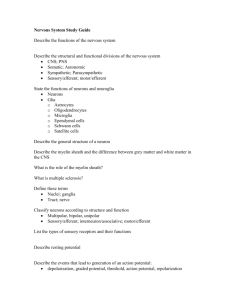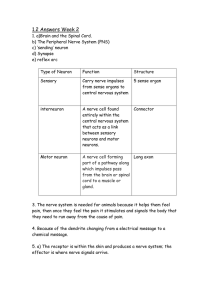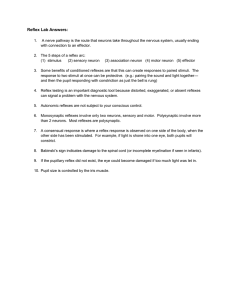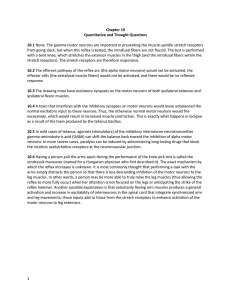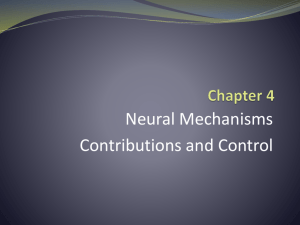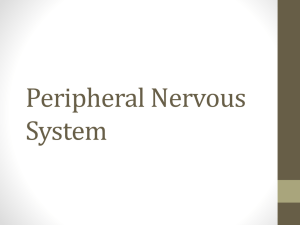Lecture 4:
advertisement
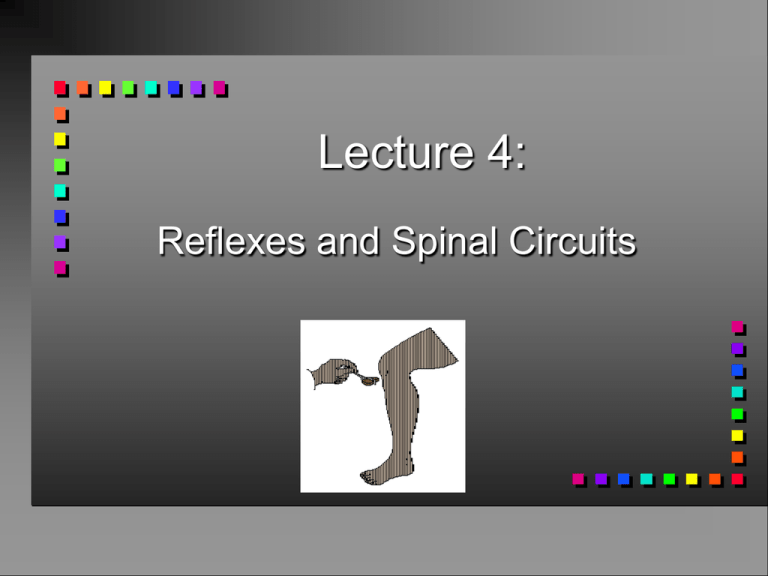
Lecture 4: Reflexes and Spinal Circuits Afferent pathway Sensory systems CNS Efferent pathway Movement Reflex... A simple neural circuit example of sensory and motor systems. Involuntary action or movement that occurs in response to a stimulus. For example: sneeze, cough, yawn, blink. Examples... Cough, irritant enters the windpipe and we need to expel it through our mouth. Sneeze, clear out nasal air passages of irritants and allergens. Sensory neurons: Also named afferent neurons: Carry messages to the CNS (brain and/or spinal cord). Motor neurons : Also named efferent neurons: Carry messages away from the CNS (brain and/or spinal cord). Each reflexive action usually involves more than two neurons between nerve cells (neurons). Interneurons A nerve cell that forms synapses with sensory and motor neurons to integrate sensory input and motor output. Motor example: Knee Jerk Reflex (Patellar reflex) Knee Jerk reflex ... Also named a monosynaptic reflex. (one connection, therefore two neurons) Monosynaptic reflex Only one synapse in the neural circuit is needed to complete the reflex. The tap below the knee causes the thigh muscle to stretch. Information is sent to the spinal cord, where it’s sent back to the muscle and we get a reflex. Reflexes: Serve as primitive responses to protect our bodies from danger. Help us to adjust to our surroundings. Are all movements reflexive monosynaptic??
